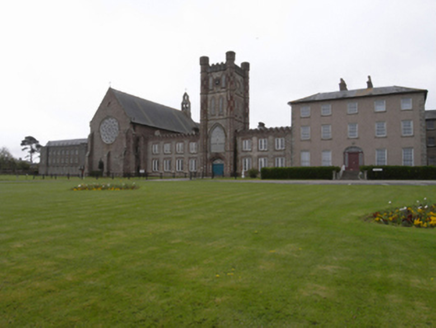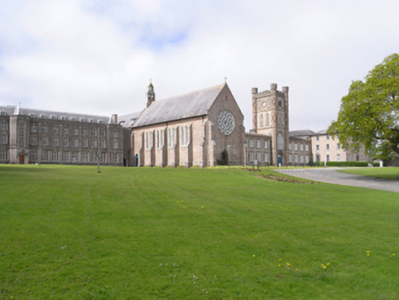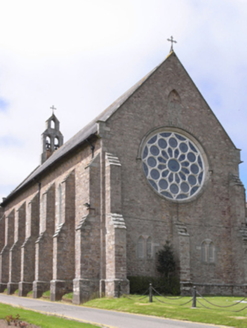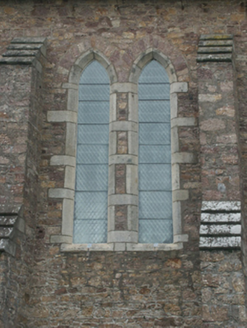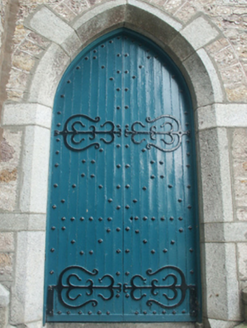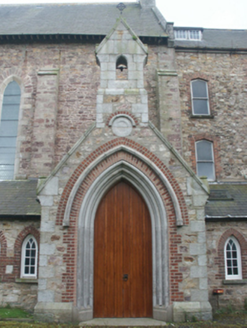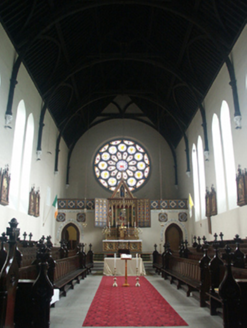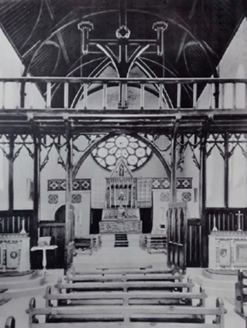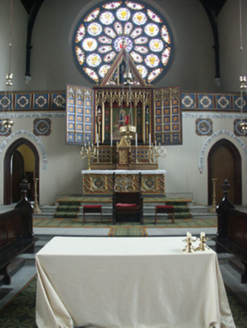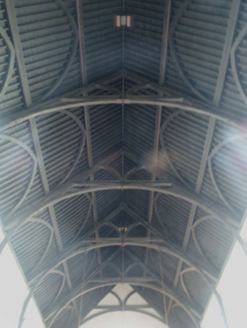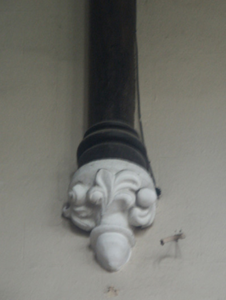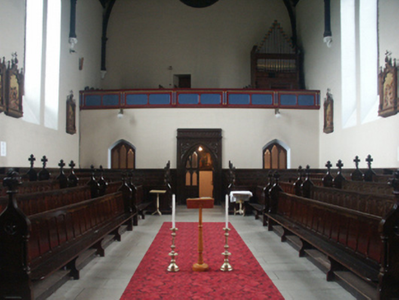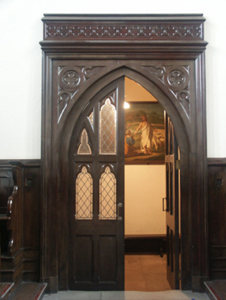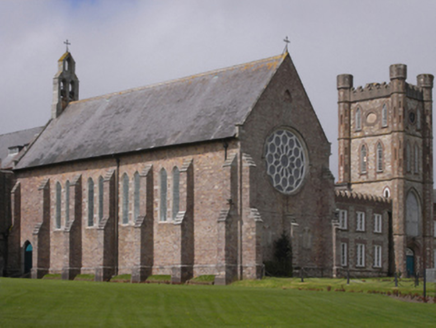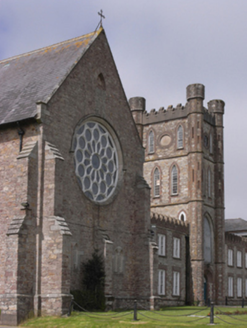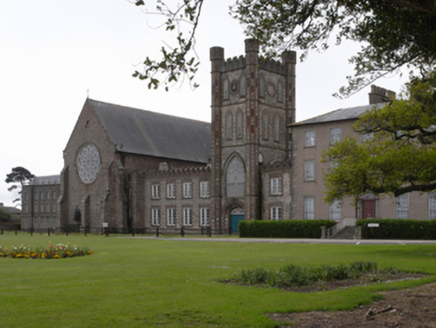Survey Data
Reg No
15504014
Rating
National
Categories of Special Interest
Architectural, Artistic, Historical, Social, Technical
Original Use
Church/chapel
In Use As
Church/chapel
Date
1835 - 1845
Coordinates
304221, 121395
Date Recorded
06/07/2005
Date Updated
--/--/--
Description
Attached six-bay double-height single-cell Catholic chapel, built 1838-40; consecrated 1840, on a rectangular plan. Renovated, 1952, with sanctuary reordered. Pitched slate roof with roll moulded cut-granite ridge tiles, lichen-covered cut-granite coping to gables on cut-granite kneelers including lichen-covered cut-granite coping to gable to entrance (west) front on cut-granite kneelers with granite ashlar buttressed gabled triple bellcote to apex framing cast-bronze bells, and cast-iron rainwater goods on exposed timber rafters retaining cast-iron hoppers and downpipes. Tuck pointed coursed rubble "Old Red Sandstone" walls on cut-granite chamfered cushion course on plinth with stepped buttresses including clasping stepped buttresses to corners having cut-granite "slated" coping. Paired lancet window openings with cut-granite block-and-start surrounds having chamfered reveals framing fixed-pane fittings having lattice glazing bars. "Rose Window" to chancel (east), cut-granite surround having chamfered reveals with hood moulding on label stops framing storm glazing over fixed-pane fittings having stained glass margins centred on leaded stained glass panels. Pointed-arch opposing door openings (west), cut-granite block-and-start surrounds having chamfered reveals framing timber boarded double doors. Interior including vestibule (west); pointed-arch door opening into nave with quatrefoil-detailed carved timber surround framing glazed timber panelled double doors; full-height interior open into roof with timber panelled choir gallery (west) supporting timber panelled pipe organ, granite flagged central aisle between finial-topped timber panelled pews, paired Gothic-style timber stations between frosted glass windows, cut-granite stepped dais to sanctuary (east) reordered, 1952, with stepped "predella" supporting Gothic-style high altar below stained glass "Rose Window" (----), and exposed round arch braced collared timber roof construction on engaged colonettes on foliated-detailed corbels with pointed-arch wind braced rafters to timber boarded ceiling on timber cornice. Set in landscaped grounds.
Appraisal
A chapel erected to a design by Augustus Welby Northmore Pugin (1812-52) representing an important component of the built heritage of County Wexford with the architectural value of the composition, 'an elegant chapel built in Pugin's best style of architecture and supported by buttresses and pilasters [sic]' (Lacy 1852, 281), confirmed by such attributes as the compact rectilinear "barn" plan form, aligned along a liturgically-correct axis; the construction in a ruby-coloured "Old Red Sandstone" offset by silver-grey granite dressings not only demonstrating good quality workmanship, but also producing a pleasing two-tone palette; the slender profile of the coupled openings underpinning a "medieval" Gothic theme with the chancel defined by an elegant "Rose Window"; and the handsome bellcote embellishing the roofline as a picturesque eye-catcher in the landscape. Having been well maintained, the elementary form and massing survive intact together with substantial quantities of the original fabric, both to the exterior and to the interior where contemporary joinery; a gilded high altar described as '[Pugin's] most important church furnishing in Ireland [and one incorporating] medieval fragments bought from a London antique dealer' (O'Donnell 1995, 143); and the Shrewsbury Arms-emblazoned "Rose Window" attributed to John Hardman and Company (founded 1838) of Birmingham, all highlight the considerable artistic potential of the composition: meanwhile, an exposed timber roof construction recalling the Pugin-designed Saint James's Catholic Church (1838-43), Ramsgrange (see 15617002), pinpoints the engineering or technical dexterity of a chapel forming part of a self-contained ecclesiastical ensemble making a pleasing visual statement in a suburban setting.
